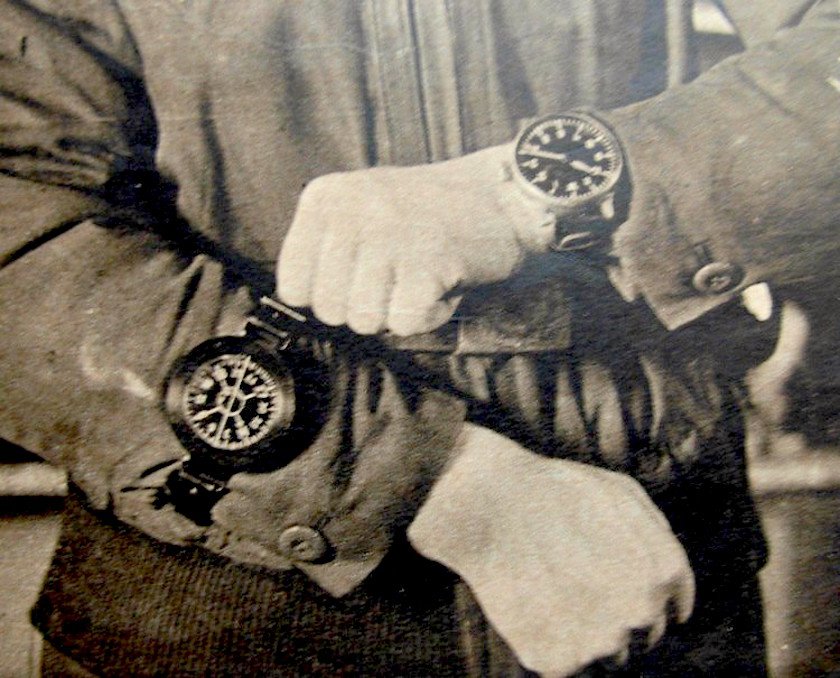Essential for keeping track of time and much more practical than pocket watches for troops in the trenches or flying aircraft, ‘trench watches’ became a “newly endowed emblem of masculinity, modernity, and First World status,” author Aja Raden explains in “Stoned: Jewelry, Obsession, and How Desire Shapes the World.”
Before the war, these watches were called ‘wristlets’ and primarily seen as a female fashion accessory due to its delicate design.
“Two decades earlier, men would rather have worn a skirt than a wristlet; after World War I, men wouldn’t be caught dead without one … watches had become sexual status symbols for men everywhere,” Raden writes.
Soon, wearing this emblem played a profound role in society.
Outnumbering the once popular pocket watches fifty-to-one, there were cases in which men, who didn’t serve in the forces were rebuked for wearing this “badge of bravery.”
 US Marine Corps PhotoMarines stand with gas masks, 1918.
US Marine Corps PhotoMarines stand with gas masks, 1918.
Author Fredric J. Friedberg’s explains in his history of the “Illinois Watch Company,” how one man was shamed for sporting a watch:
After the end of World War I, a lawyer was arguing a point of law in court when Judge Kenesaw Mountain Landis noticed that the lawyer was wearing a wristwatch.
The judge halted the lawyer in mid-sentence and asked him if he served in the war.
When the lawyer responded he had not, Judge Landis ordered him to remove the watch, admonishing him that it was inappropriate for non-veterans to wear a wristwatch.
Ouch.
Today, the standard timepiece continues its legacy among men’s fashion.
NOW WATCH: These are the watches worn by the smartest and most powerful men in the world














